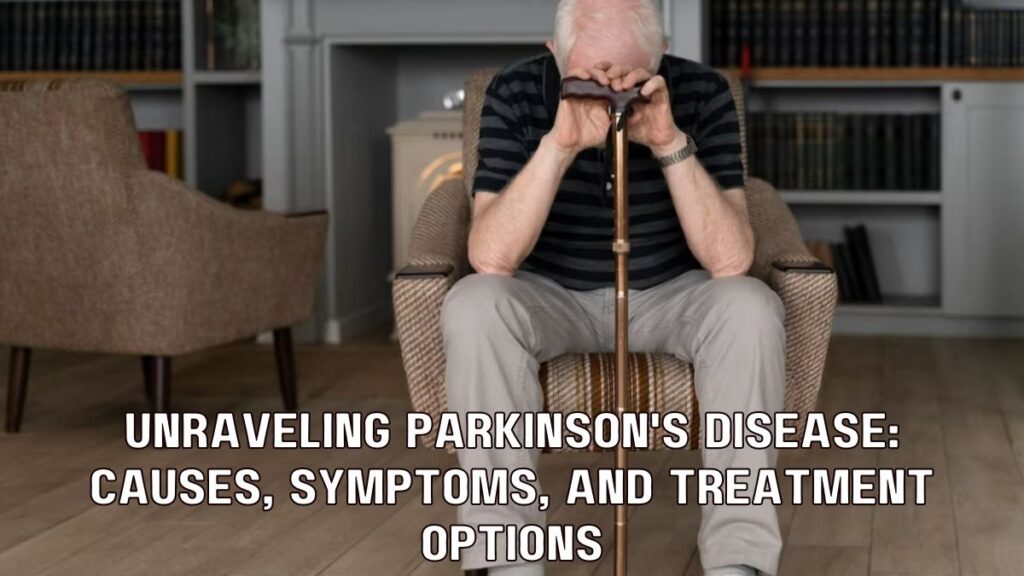Introduction:
Parkinson’s disease is a complex and debilitating neurological disorder that affects millions of people worldwide. Although it predominantly affects older adults, it can also occur in younger individuals. As researchers delve deeper into the mechanisms behind this condition, our understanding of Parkinson’s disease has significantly improved, leading to better treatment options and improved quality of life for those living with the disease. In this blog, we will unravel the causes, symptoms, and various treatment options available for Parkinson’s disease.
1.Understanding the Causes:
Parkinson’s disease is primarily caused by the progressive loss of dopamine-producing neurons in the substantia nigra region of the brain. Dopamine is a neurotransmitter that plays a crucial role in coordinating movement and controlling muscle activity. The exact cause of the degeneration of these neurons is still not fully understood, but genetic and environmental factors are believed to contribute to its development.
2.Recognizing the Symptoms:
The symptoms of Parkinson’s disease vary from person to person and may start with subtle signs that gradually worsen over time. Common symptoms include tremors (shaking), bradykinesia (slowness of movement), muscle stiffness, and impaired balance and coordination. Other symptoms may include speech difficulties, a stooped posture, and a shuffling gait. As the disease progresses, individuals may also experience non-motor symptoms, such as depression, anxiety, sleep disturbances, and cognitive impairment.
3.Available Treatment Options:
While there is currently no cure for Parkinson’s disease, several treatment options are available to manage its symptoms and improve the quality of life for affected individuals:
a. Medications: Various medications, such as levodopa, dopamine agonists, and MAO-B inhibitors, can help manage motor symptoms by increasing dopamine levels in the brain or mimicking dopamine’s effects.
b. Deep Brain Stimulation (DBS): DBS is a surgical procedure where electrodes are implanted into specific areas of the brain. These electrodes emit electrical impulses that help control abnormal brain activity and reduce tremors and other motor symptoms.
c. Physical Therapy: Physical therapy and regular exercise can help improve mobility, flexibility, and balance, easing the impact of Parkinson’s disease on daily activities.
d. Speech and Occupational Therapy: Speech and occupational therapy can aid in managing speech difficulties and enhancing daily living skills.
e. Lifestyle Changes: A healthy lifestyle, including a balanced diet, regular exercise, and adequate rest, can support overall well-being and potentially slow disease progression.
4.Ongoing Research and Hope for the Future:
Parkinson’s disease research is continually advancing, offering hope for better treatments and ultimately a cure. Scientists are investigating innovative therapies, including gene therapy, stem cell transplantation, and targeted drug therapies, to address the root causes of the disease. Clinical trials are ongoing, offering opportunities for patients to participate in groundbreaking research.
Conclusion:
Parkinson’s disease is a complex and challenging condition that impacts individuals physically, emotionally, and mentally. By understanding the causes, recognizing the symptoms, and exploring available treatment options, we can support individuals living with Parkinson’s disease in their journey to manage symptoms and maintain a high quality of life. Ongoing research and a dedicated focus on advancements in Parkinson’s disease management provide hope for a future where this condition can be better understood, treated, and potentially cured. With continued efforts in research, support, and awareness, we can strive to unravel the mysteries of Parkinson’s disease and improve the lives of those affected by this neurological disorder.

